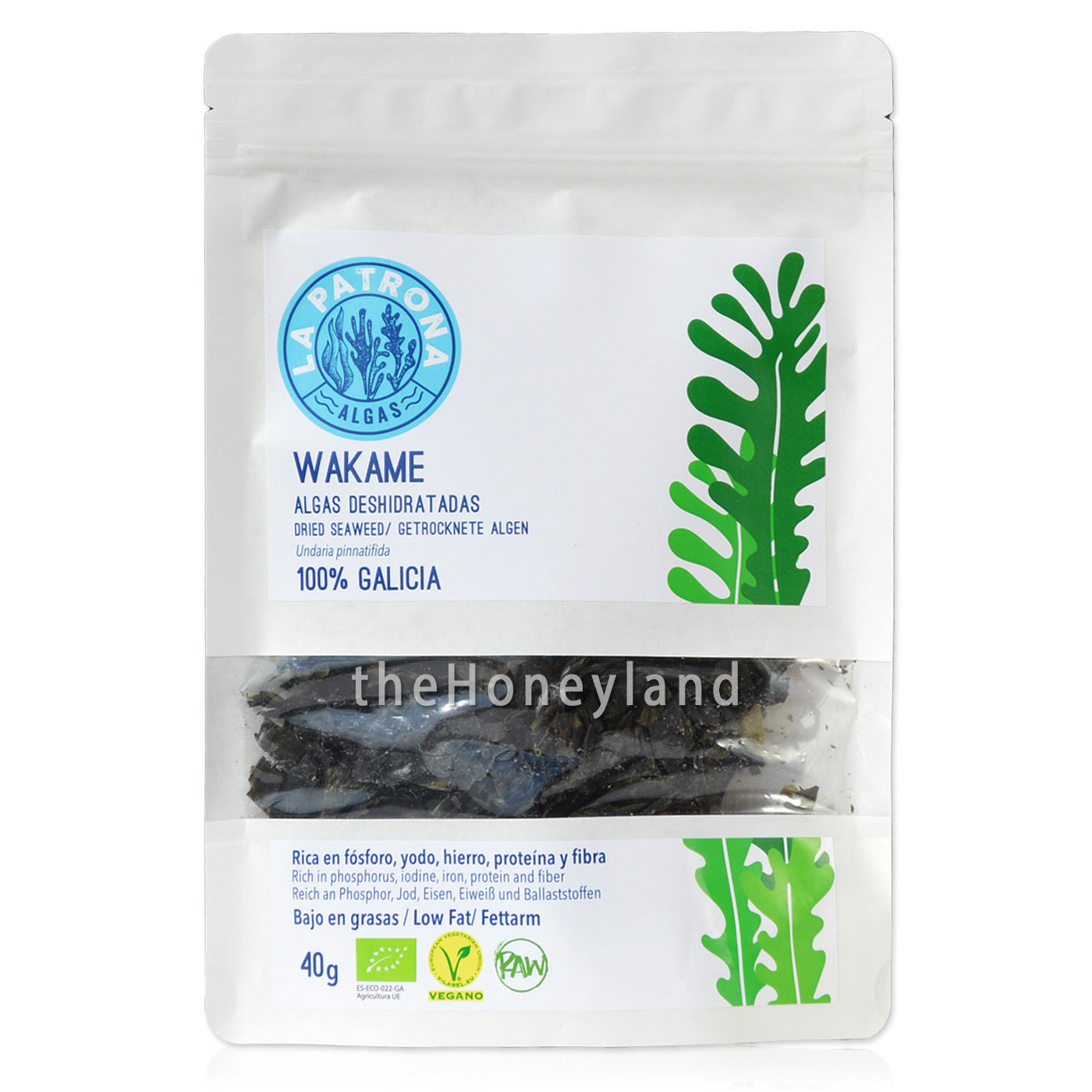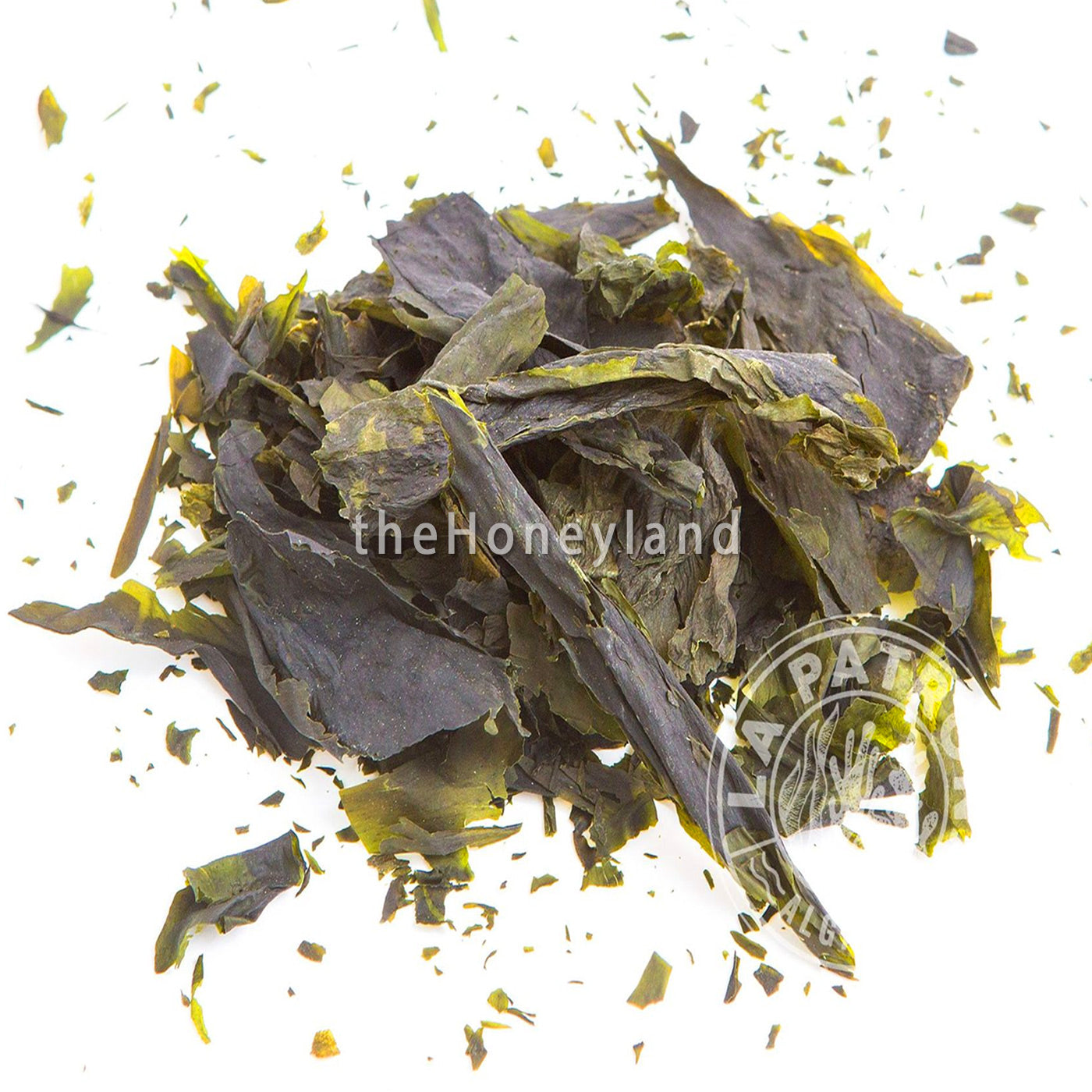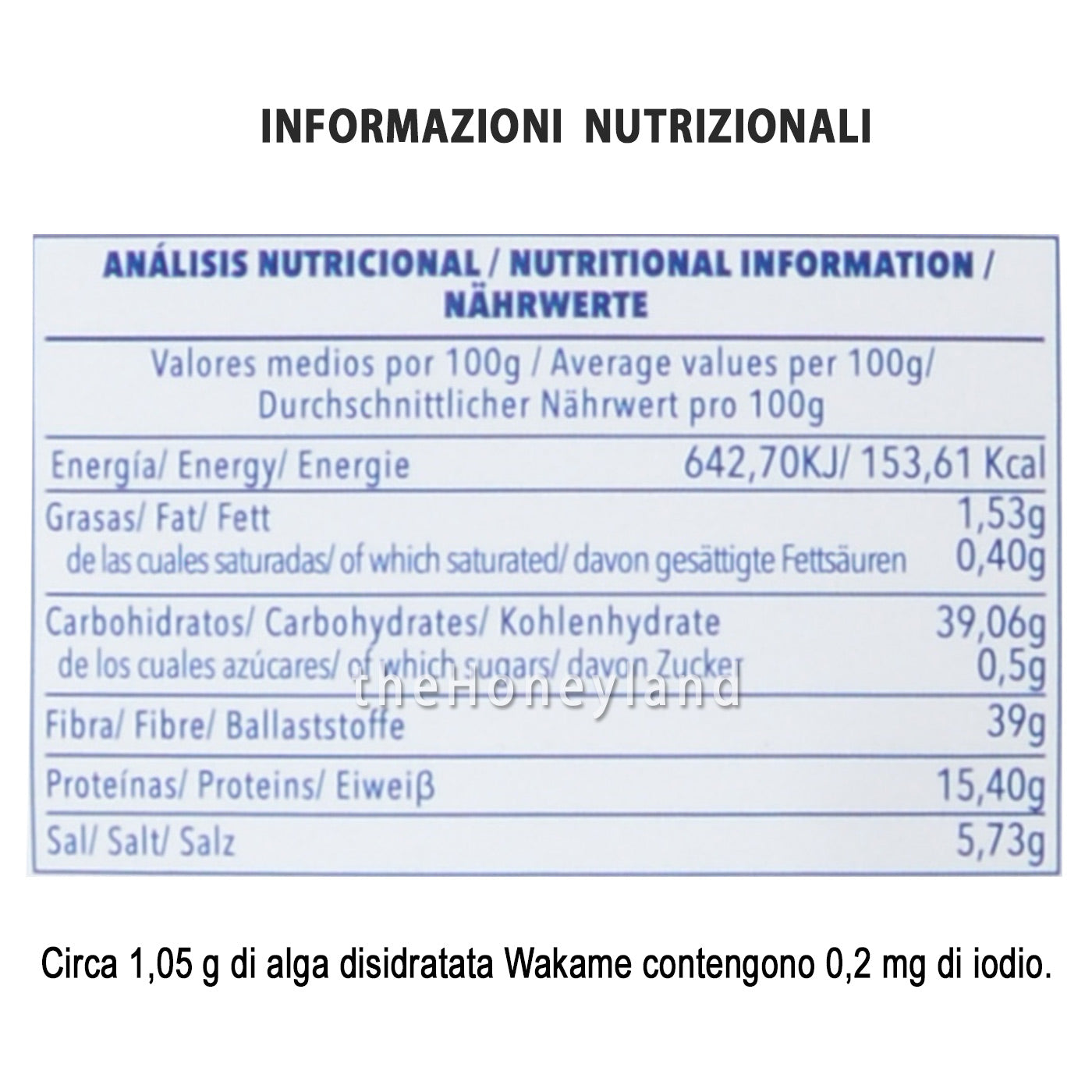Description
Instructions
IN THE KITCHEN
The delicate taste makes WAKAME seaweed one of the most versatile seaweeds that can be used in various ways:
- as AROMATIC HERB - small fragments of seaweed leaves broken into small fragments and inserted into the context of any dish without rehydration. To sprinkle on dishes.
It can also be used at the end of cooking with pasta or rice, in an omelette, on pizza... - Used raw for salads, side dishes, or green sauces: wash and rehydrate in hot water for 10-15 minutes. The weight of the seaweed increases when rehydrated by up to ten times.
- Steamed : delicious to accompany vegetables.
- Soups and soups - Boil 20 minutes with soups, vegetables, potatoes, rice, oats, millet, polenta, semolina, etc. You can also sauté with onion for pasta, empanadas, pizzas, quiches, etc.
WAKAME are a precious ingredient for soups and the classic miso soup.
Thanks to its soluble fiber content, wakame seaweed has a satiating effect , so it can be an excellent support in slimming diets.
Recommended dose : between 2 and 10 g of dried wakame seaweed per day, depending on personal needs.
* For particular health situations and in case of thyroid pathologies, always contact your trusted specialist to evaluate the intake of wakame seaweed and the most suitable quantities. The information provided on this site is of a general nature and cannot in any case replace the advice of a doctor (i.e. a person legally authorized to practice).
Nutritional facts
| per 100 g | |
|---|---|
| Energy | 642,7 kj / 153,61 kcal |
| Fats | 1,53 g |
| Saturated | 0,4 g |
| Carboidrati | 39,06 g |
| from which Sugars | 0,5 g |
| Proteins | 15,4 g |
| Salt | 5,73 g |
| Fibers | 39 g |
| 1.05 g di prodotto secco contengono circa 0.2 mg di iodio | |
Recycle & Enviroment
-
Compostable packagingBiohumid
Check the regulations of your local municipality.







